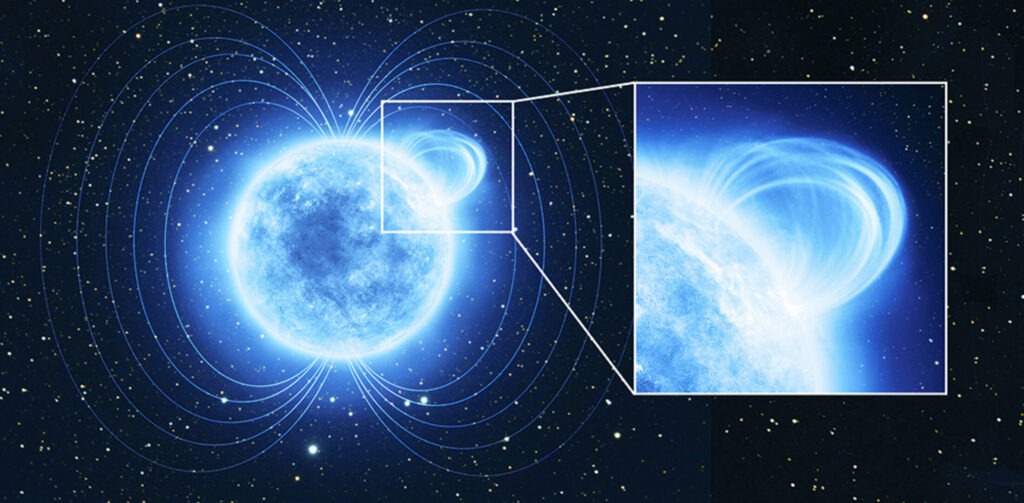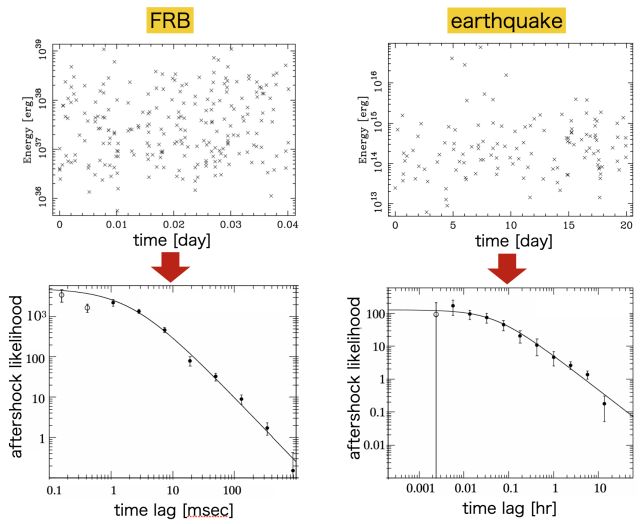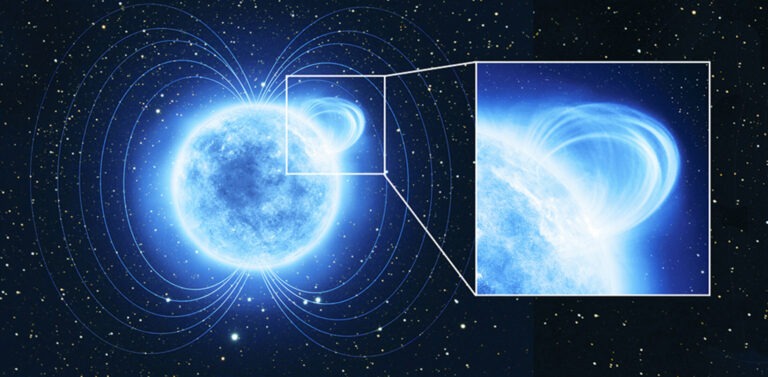Starquakes: Space Resembles Earthquakes with Aftershocks in the Case of Fast Radio Bursts
New Evidence Suggests that Radio Flashes Across the Universe Originate from the Tremors of Celestial Corpses
An in-depth analysis of thousands of radio flashes emitted by three recurrent sources of fast radio bursts has uncovered an unexpected resemblance, challenging the prevailing theory of these enigmatic phenomena being akin to solar flares. Instead, the newfound resemblance aligns them more with seismic events, akin to terrestrial earthquakes. According to astronomers Tomonori Totani and Yuya Tsuzuki from the University of Tokyo, this similarity further substantiates the theory that these colossal bursts result from starquakes, potentially occurring on the surface of magnetars, dead stars with intense magnetic fields.

Totani elaborates, “The prevailing hypothesis postulated that the surface of magnetars might be undergoing starquakes, a phenomenon characterized by energy releases akin to earthly earthquakes. Recent advancements in observations have paved the way for the identification of numerous additional fast radio bursts (FRBs). Consequently, we seized the opportunity to compare the extensive datasets available for FRBs with data from terrestrial earthquakes and solar flares to investigate potential parallels.”
Fast radio bursts, as their name suggests, remain among the most captivating cosmic mysteries. They manifest as sudden, incredibly powerful bursts of radio waves, but they endure for mere milliseconds, discharging energy equivalent to 500 million Suns in that fleeting period. The sporadic nature of their occurrence makes them unpredictable and exceedingly challenging to study.
However, recent years have yielded substantial breakthroughs in this field. A handful of fast radio burst sources exhibit repeatability, allowing astronomers to closely monitor them and scrutinize the signals they emit. Moreover, in 2020, a momentous discovery occurred, as a fast radio burst originating from within the Milky Way was detected, enabling astronomers to trace it back to the very star that emitted it.
That celestial body, in question, happened to be a magnetar, a specific type of neutron star, which is the remnants left behind after a massive star undergoes a supernova explosion. However, magnetars distinguish themselves by possessing extraordinarily potent magnetic fields, making them the most formidable magnetic entities known in the entire cosmos.
This revelation provides a plausible explanation for the occurrence of these colossal outbursts. The immense magnetic field’s strength is so overwhelming that it distorts the magnetar’s structure, exerting a compelling outward force. Concurrently, the sheer density of the collapsed core of the once-massive star generates an equally formidable inward gravitational pull.
The interplay between these opposing forces precipitates the magnetar’s rupture and subsequent seismic activity, leading to the release of intense flares and potentially substantial amounts of electromagnetic energy manifesting as radio waves—these phenomena are recognized as fast radio bursts.
Tomonori Totani and Yuya Tsuzuki embarked on a distinctive statistical analysis, deviating from previous approaches, to seek insights. Instead of solely examining the intervals between bursts, these two astronomers turned their focus to the timing and the energy released in nearly 7,000 bursts stemming from three distinct sources.

Subsequently, they applied the same time-energy correlation analysis to seismic data on Earth and also employed it to scrutinize solar flares, which had been proposed as an alternative explanation for fast radio bursts.
“The outcomes revealed remarkable parallels between FRBs and earthquakes,” Totani states.
“Firstly, the likelihood of an aftershock following a single event ranges between 10-50 percent; secondly, the rate of aftershock occurrence diminishes over time, following a power-law relationship with time; thirdly, the aftershock rate remains constant even when the overall activity of FRBs or earthquakes (mean rate) undergoes significant changes; and fourthly, there is no discernible connection between the energies of the primary shock and its subsequent aftershock.”
Meanwhile, there was a noticeable lack of similarity with solar flares. This implies that, at least for these three specific sources of fast radio bursts, the starquake hypothesis stands as a plausible explanation.
Nonetheless, there could be alternative explanations for other sources of fast radio bursts, leaving the enigma partially unresolved. Nevertheless, these findings do pave the way for in-depth investigation of these specific bursts, offering insights into the broader realm of starquakes in general, with a particular emphasis on magnetars and neutron stars.
Totani notes, “Studying starquakes occurring on remote, ultradense stars, which exist in environments vastly different from Earth, may provide us with fresh perspectives on understanding terrestrial earthquakes.”
“The interior of a neutron star represents the densest location in the entire universe, comparable to the interior of an atomic nucleus. The occurrence of starquakes in neutron stars presents an exciting prospect for gaining novel insights into the properties of exceedingly high-density matter and the fundamental laws governing nuclear physics.”
The research has been published in the Monthly Notices of the Royal Astronomical Society.
Source: ScienceAlert
Do not forget to share your opinion with us to provide you with the best posts !




0 Comments